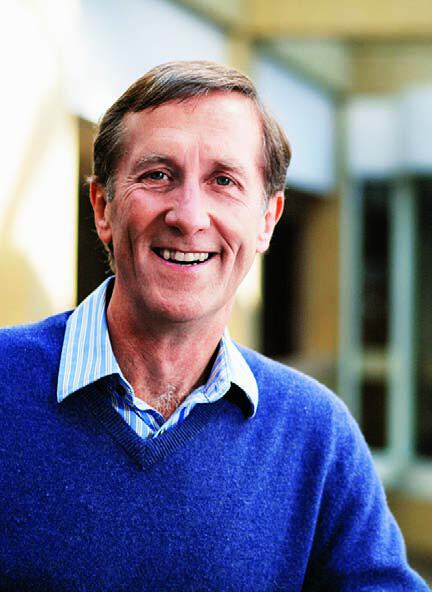
To John Thompson, Rio Tinto’s Pilbara operations represent a glimpse into the near future.
At the iron mines in Western Australia, the ore is hauled by autonomous trucks controlled via an operations centre in Perth, 1,500 kilometres away. The trucks are part of Rio Tinto’s Mine of the Future program, a plan to move more ore faster, more safely and using less fuel, increasing productivity and profits.
As mines and equipment continue to grow in size and capacity, these are the kinds of efficiencies necessary for the mining industry to evolve, thrive and be sustainable in the future, says Thompson.
Throughout his 32-year career – and now as the chair of Geoscience BC, the president of the Canada Mining Innovation Council and principal at PetraScience Consultants – Thompson has been, and remains, deeply involved in prodding Canadian mining companies to lead the industry forward.
“Right now, there are huge challenges in the industry because we are trying to be more sustainable and be good stewards, all while still having to maintain margins,” he says. “Technology holds solutions to help us balance these issues.”
Searching for those balances has been a focus of Thompson’s career. Since graduating with a geology degree from Oxford University in England, and then a master’s and PhD from the University of Toronto, he has always worked in jobs that looked to research and development to increase production in mining and exploration.
In the United Kingdom, he searched for novel mining applications of cutting-edge research. “I got to visit a lot of scientists around the world to see what they were doing and how it might apply to mining,” he says. “It was fascinating work.”
A stint in Salt Lake City then led to the University of British Columbia, where he became the director of the Mineral Deposit Research Unit, managing exploration-related research for 20 companies. From there, he crossed town to Teck Resources Limited, eventually becoming the vice-president of technology and development. “I was looking at everything from water treatment to wind farms, searching for ways technology could help us be more efficient,” he says.
Throughout his career, including now as a consultant working mostly on exploration projects, he’s watched the Canadian mineral exploration and mining industry go from being a leader in research and development to a laggard – especially compared to Australia.
According to Thompson, t he Australia federal lab system is better funded and focused than in Canada, and there’s a tax credit for innovation. Industry has different attitudes, too. “It’s no coincidence that the two largest mining companies make a big chunk of their income in Australia,” he notes. “There’s a big incentive for them to do R&D to improve their operations there, benefitting all Australian mining.”
For the industry to thrive in Canada, Thompson believes companies here need to step up, too. “For them to stay competitive they need to invest in the long haul,” he says. “We have strong mid-tier companies that have a huge role to play. They may not have the same financial clout as a Rio Tinto or BHP, but their size allows them to implement innovation opportunities more easily.”
And things are changing. Under Thompson’s leadership, the Canada Mining Innovation Council has been working to bring the country’s vast and varied mining industry together to better understand what innovations are necessary and get to work solving them.
“The industry was really fragmented by geography, by mineral, by regulations, by region,” he says. The $13-million Footprints project brings together 42 researchers and 45 industry collaborators from 27 mining-related companies.
A major focus will be on digging up, crushing, transporting and grinding rock, he believes. “Finding quality ore bodies is very rare, so we need to become more efficient at exploiting what we have,” he says.
For instance, MineSense Technologies, one of PetraScience’s clients, is developing sensors that will help miners target areas of higher ore concentrations.
But automation creates the biggest opportunities for efficiencies.
“Remote operation centres, like the ones on these mines in Australia, bring people from different parts of the mine, who would rarely interact otherwise, together in the same room where they can talk and collaborate,” Thompson says. “I think in these situations they’ll come up with efficiencies we haven’t even thought of yet.”
To a mine employee it may all sound like job cuts, but Thompson doesn’t think so.
“We’ll have the same number of people involved in the industry,” he says. “They will just be located differently. The people working in the mine will be more local and people in operations could be anywhere.
“Big changes will happen,” he concludes, “and they will happen soon.”
